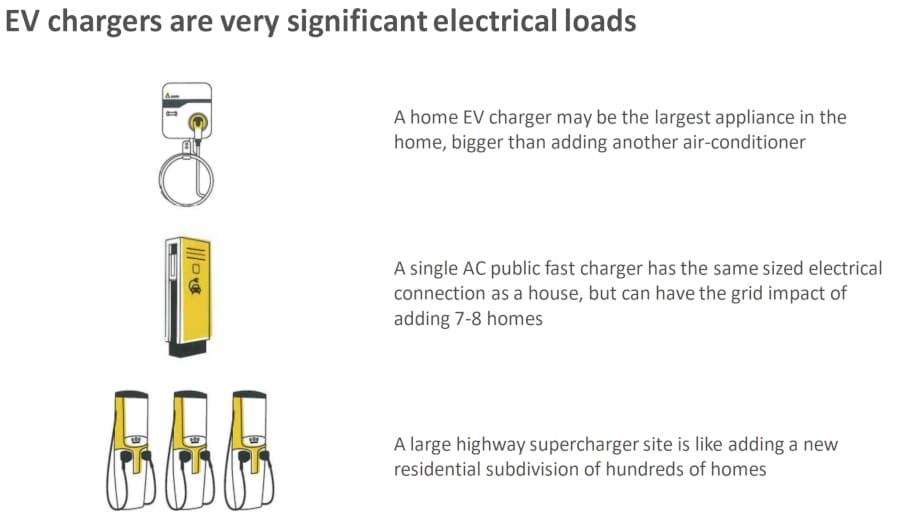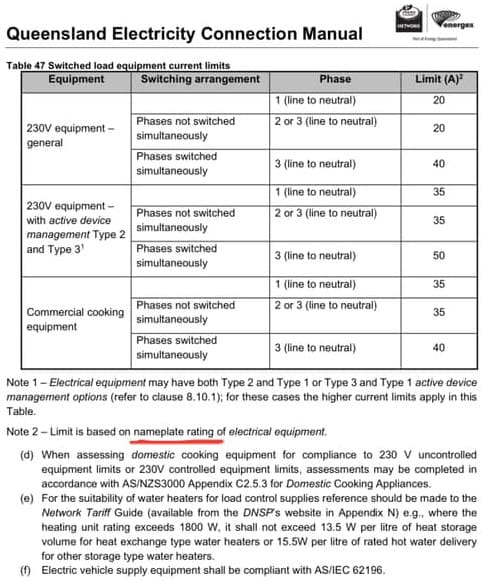How to Stop Your Power Company Locking You Out Of Your Own EV Charger


It’s come to our attention recently that at least one customer has found his EV charger isolated, locked out, and served with a defect notice after a visit from his local electricity network, Energex.
What was a cheap and cheeky installation of a 7kW-32 amp EV charger has turned into an expensive emergency exercise in getting proper approval and paying again to reconnect the hardware. This post explains why getting your EV charger installed by a local expert who understands the local rules and permissions required for full-powered home EV charging is important.
We Know Queensland Is Special
I’ve written before about Queensland’s EV connection rules. By mandating that your EV charger is connected to a controlled load instead of your solar, they can charge you coal-fired prices to charge your car, even when the sun is shining.
Thankfully, the most recent updates have included a flexible connection option, allowing QLD residents to finally connect a full-power EV charger to the same circuit as your solar. Banana benders went from laggard to leader in one leap.
Approving Connections Isn’t Hard
Your EV charger is likely the biggest load in your house, and in many jurisdictions, your local network needs to know about it. To get your EV charger connection approved, your electrician must log on to the local electricity network’s website and fill out a form. I’ve yet to see an EV charger knocked back unless it’s because of an ancient consumer main not fit for purpose.
Networks want to know what’s connected so they can plan upgrades. They also need to know because, as a society, we can’t afford to have everybody come home, plug their car in, heat the house and cook dinner at 6:00 PM.
It makes no sense to build a system just for that limited rush hour when a few smarts will better share the load more safely and for less money.


Unclench Your Fists
While some consumers are clutching their pearls and threatening to “go off grid” seeing network control as authoritarian overreach, they seem to forget that controlled loads have been network controlled since forever, and nobody complains because they’re cheap. (the rates and the customers)
Flexible charging and flexible exports key together perfectly, because your EV (or domestic battery) charging is a behind-the-meter load.
The Future Looks Flexible
At the bleeding edge, in South Australia, the local network, SAPN, requires approval for an EV charger connection and OCPP control of the wall charger.
This means when the grid is under some stress and we need to share our electricity (averaging the load out a bit more), the network can step in and turn your EV charger down.
It’s the other side of the coin to flexible exports, where solar generation driving energy into the grid is turned down when the weather is too sunny.
Don’t Imagine You’ll Get Away With It
With the rollout of smart electricity metering, retailers and DNSPs have more data than ever.
And that means networks can see what kind of loads you’re putting on the grid. I know firsthand that Solar Analytics software can correctly identify a heat pump hot water service from your metering data.
Your imagination need not be stretched to realise an EV charger will be easy to pick up, cross reference to your address and check for connection approval.
Don’t Cut Corners
For those with a genuinely tight arse, we’ve written before about charging an EV with a standard power point. Once people have some familiarity, they’ll work out a 20km commute doesn’t need 500km range, so topping up whenever you like without any network oversight will be fine. Just make sure the socket and plug you’re using is nice and clean.
Of course, a hard-wired charger with a proper plug on the wall will be more reliable and will save the day when you need a big charge in a hurry.

Thanks to Michael Shaughnessy & James Graham for pointing this out.
In Queensland, you could previously avoid the network rules by turning the speed down from 32 to 20amps ( 7.3 kW down to 4.6 kW). However the pedants have now clarified the rules to cite the nameplate rating for the equipment. Adjustable units pose too much of a risk, apparently.
However, installing a full-power 7kW charger requires proper permission and a 40 amp circuit.
Click here and we’ll hook you up with a pre-vetted EV Charger installer

We advise that 7kW EV chargers have at least a 40amp supply, but if the switchboard is crowded, the circuit should be uprated.
Original Source: https://www.solarquotes.com.au/blog/ev-charging-policing/















